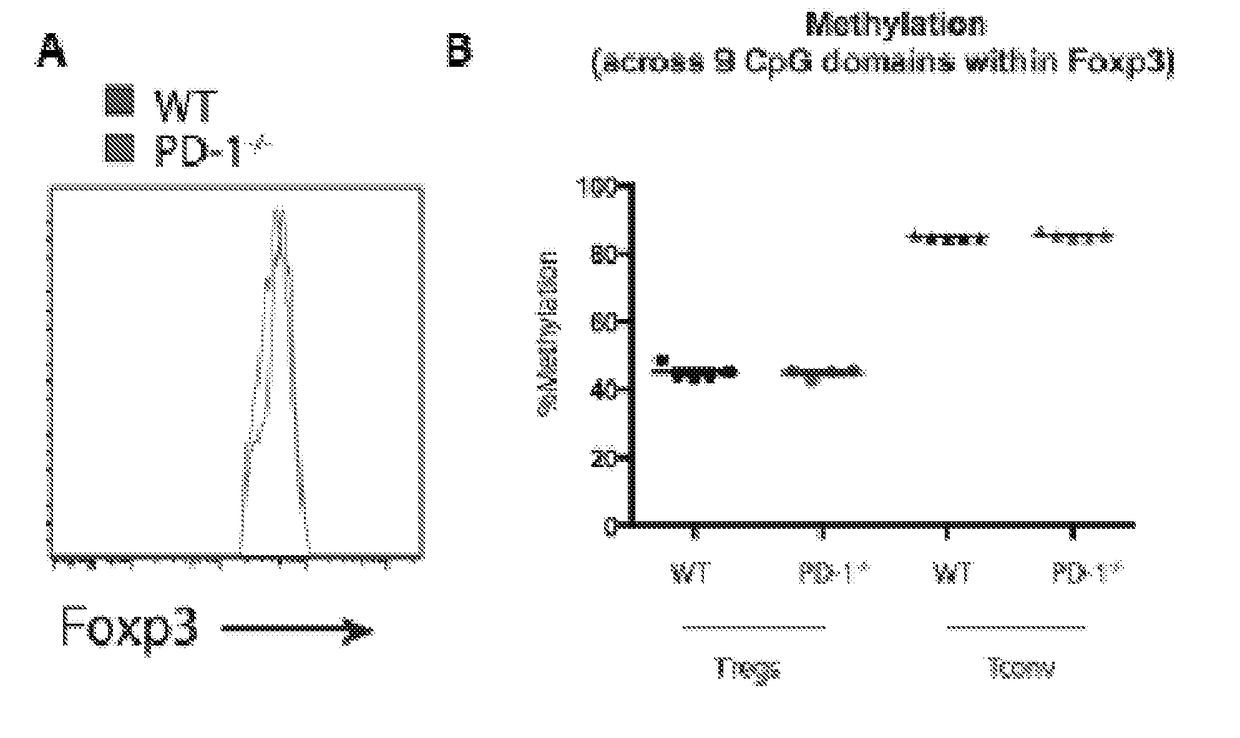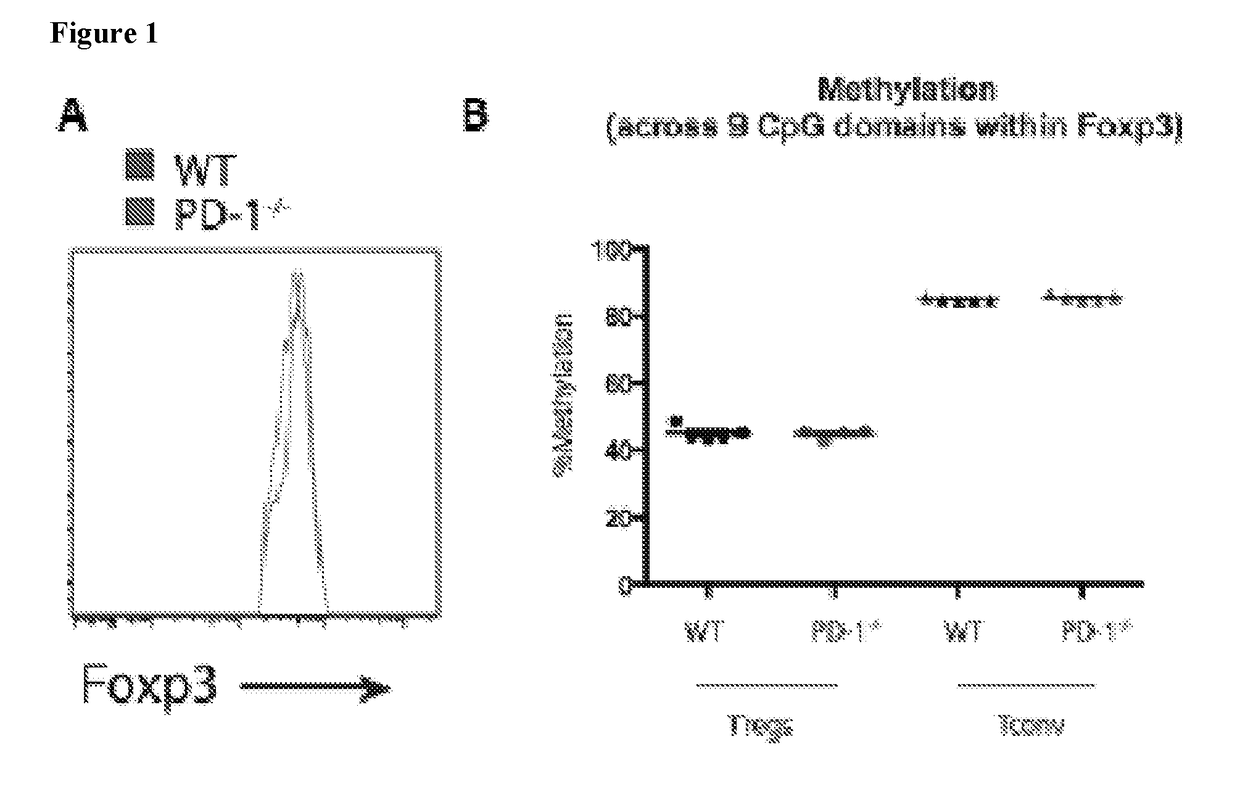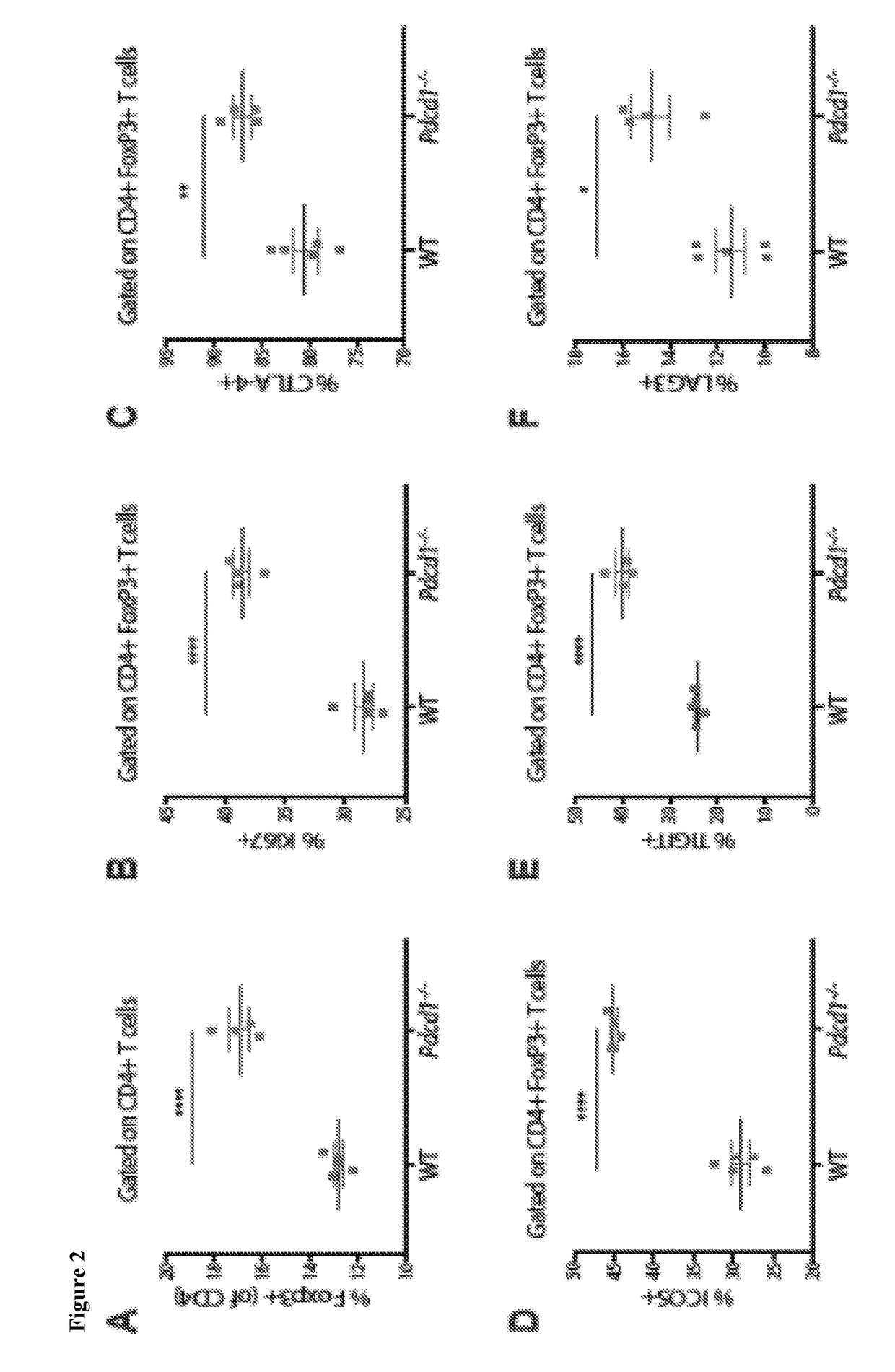Regulatory t cell pd-1 modulation for regulating t cell effector immune responses
a t cell and immune response technology, applied in the field of regulating t cell effector immune responses, can solve the problems of poorly understood role of pd-1 on the effector tregs in homeostasis and disease, and achieve the effects of increasing the suppression rate of effector t cells (teffs), increasing the function, and increasing the frequency of tregs
- Summary
- Abstract
- Description
- Claims
- Application Information
AI Technical Summary
Benefits of technology
Problems solved by technology
Method used
Image
Examples
example 1
and Methods for Examples 2-7
A. Mice
[0374]Wild type (WT) FoxP3GFP reporter, PD-1− / − FoxP3GFP, FoxP3Gre-YFP mice, and FoxP3ERT2-Cre-GFP mice have been previously reported in Rubtsov et al. (2008) Immunity 28:546-558 and Rubtsov et al. (2010) Science 329:1667-1671. TCRα− / − and CD45.1 C57Bl / 6 mice were obtained from The Jackson Laboratory. To generate PD-1 conditional knockout mice, a PD-1 targeting vector containing frt sites on either side of a selection cassette containing the neo gene under control of the PGK promoter was generated. Exons 2, 3 and 4 encoding the IgV, transmembrane and first cytoplasmic exon of PD-1 were inserted into the vector downstream of the selection cassette. The flanking regions of the PD-1 gene were cloned from a PD-1-containing bacterial artificial chromosome (BAC) using standard techniques. Linearized vector DNA was electroporated into Bruce 4 C57BL / 6 ES cells and the resulting neomycin-resistant ES cells were screened for homologous recombination. ES cell...
example 2
insic Effects of PD-1 on Treg Expansion and Activation
[0388]Treg homeostasis and function in naïve wild-type (WT) and PD-1 null mice (PD-1− / −) were analyzed and a modest increase in regulatory T cell (Treg) frequency in the spleen and lymph nodes of PD-1− / − mice was observed (FIG. 2). Increased frequencies of CD44hiCD62lo activated Tregs were observed in the spleen (FIG. 3A) and higher Ki67 expression in PD-1− / − mice compared to wild-type mice (FIG. 2B). In addition, there were greater percentages of Tregs expressing CTLA-4 (FIG. 2C), ICOS (FIG. 2D), TIGIT (FIG. 2E), and LAG3 (FIG. 2F) in the Pdcd1− / − mice and an increased frequency of Tregs co-expressing multiple co-inhibitory molecules (FIG. 3B). Interestingly, Pdcd1− / − Tregs expressed higher levels of IRF4 (FIG. 2G), a transcription factor important for optimal Treg suppressive ability (Zheng et al. (2009) Nature 458:351-356; Levine et al. (2014) Nat. Immunol. 15:1070-1078), while levels of FoxP3 were comparable between Pdcd1− / − ...
example 3
lates Treg Suppression of Teffs
[0389]In order to determine how PD-1 deficiency affects Treg function, an in vitro Treg-mediated suppression assay was used. WT or PD-1− / − Tregs were cultured with naïve CD4+ effector T cells (Teffs) in the presence of irradiated APCs and anti-CD3 for 3 to 4 days. Tregs more potently suppressed Teff cell proliferation, as measured by 3H-thymidine incorporation (FIG. 2H) or by dilution of CellTrace Violet in effector T cells (FIG. 2I) compared to WT Tregs. In addition, PD-1− / − Tregs more potently suppressed Teff. These data indicate that PD-1 restrains Treg suppressive function and that loss of PD-1 enhances their suppressive capacity.
PUM
| Property | Measurement | Unit |
|---|---|---|
| radioactive | aaaaa | aaaaa |
| fluorescent | aaaaa | aaaaa |
Abstract
Description
Claims
Application Information
 Login to View More
Login to View More - R&D
- Intellectual Property
- Life Sciences
- Materials
- Tech Scout
- Unparalleled Data Quality
- Higher Quality Content
- 60% Fewer Hallucinations
Browse by: Latest US Patents, China's latest patents, Technical Efficacy Thesaurus, Application Domain, Technology Topic, Popular Technical Reports.
© 2025 PatSnap. All rights reserved.Legal|Privacy policy|Modern Slavery Act Transparency Statement|Sitemap|About US| Contact US: help@patsnap.com



